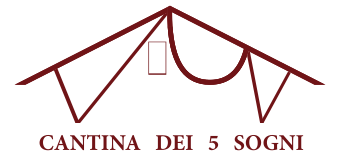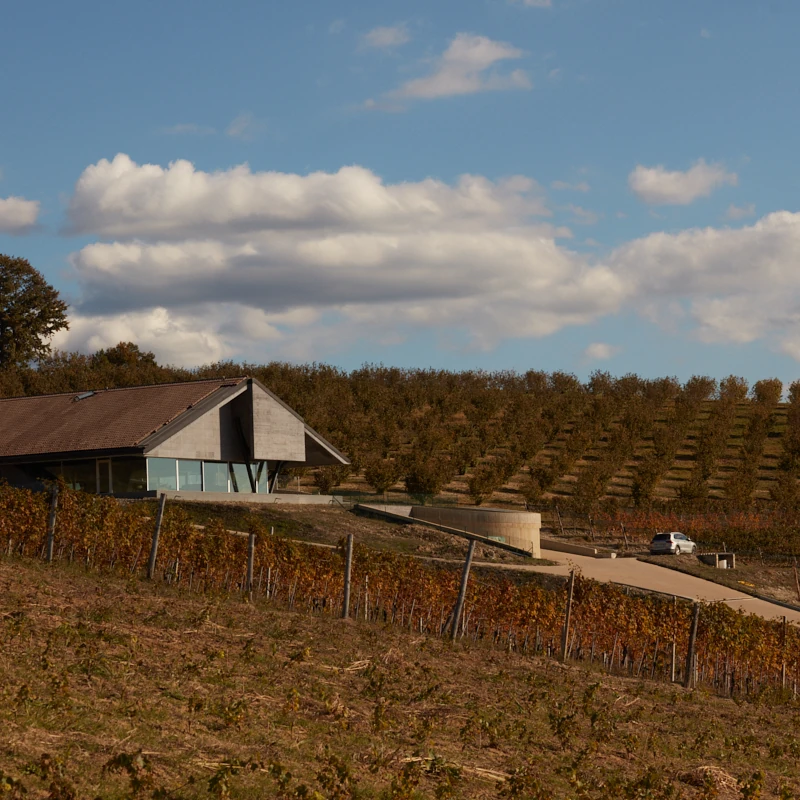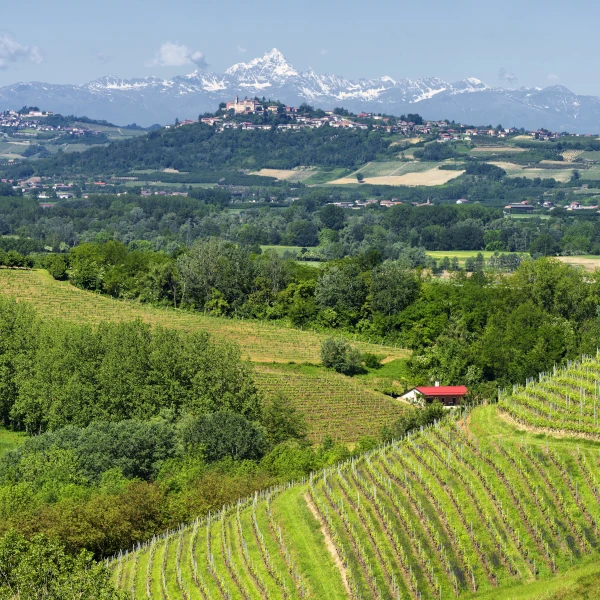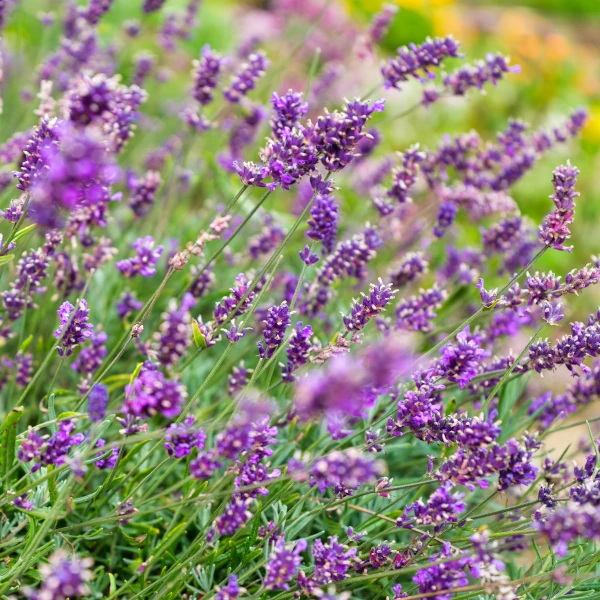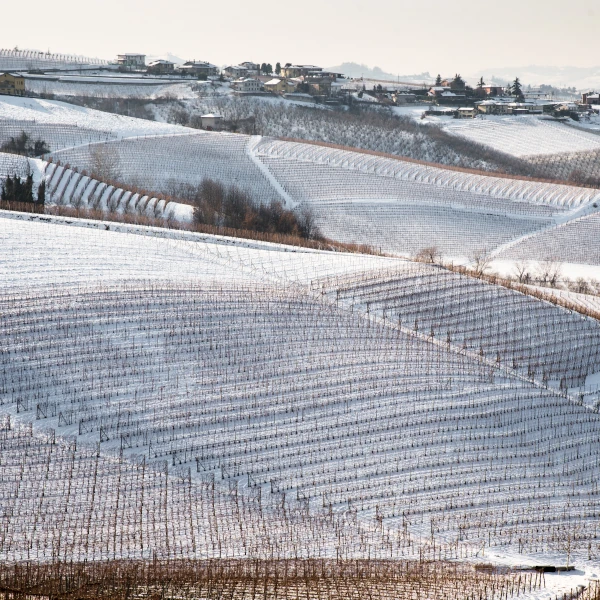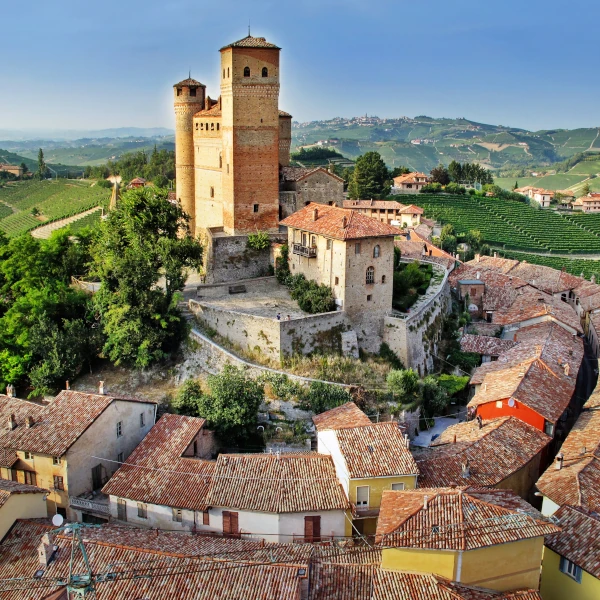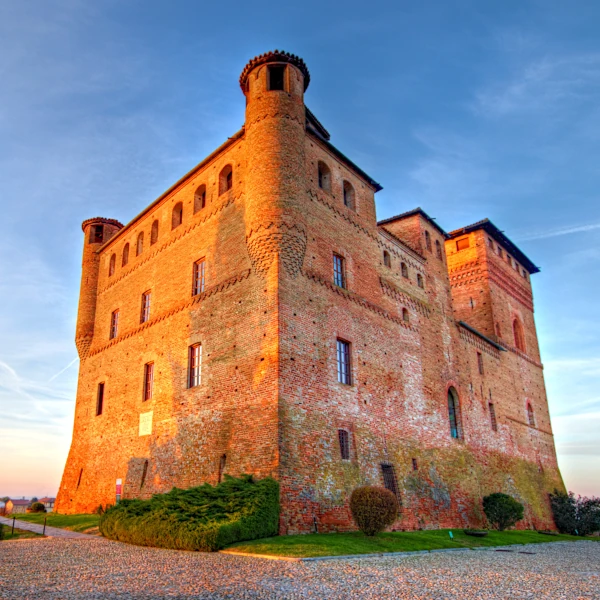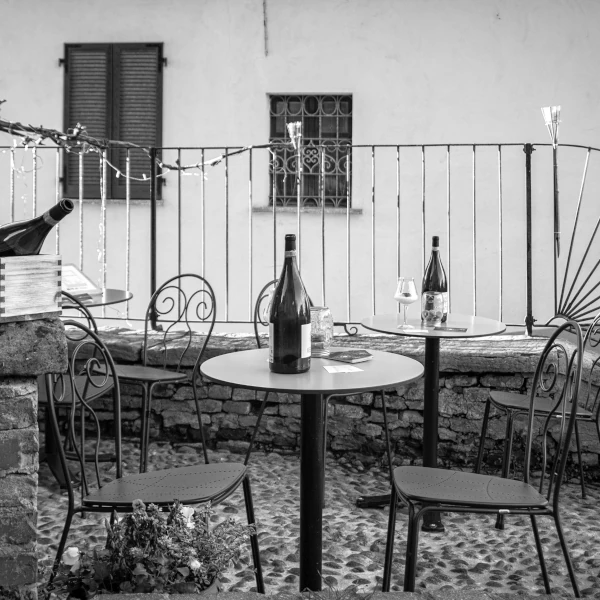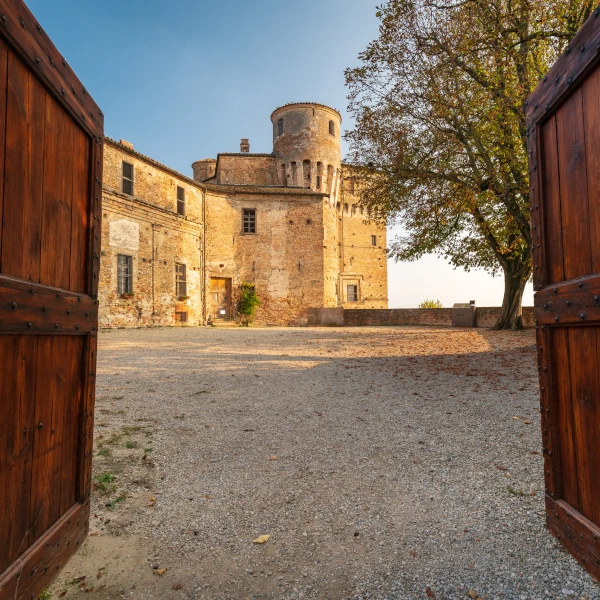An exciting journey
Discovering ancient villages, enchanted meadows, historic Langhe wineries and intense flavors
The Langhe is a hilly area located in the heart of Piedmont, between the areas of Cuneo and Asti.
The historical name Langhe, comes, in fact, from the Piedmontese word “langa” meaning “hill.”
Today, the Langhe is recognized byUNESCO as a World Heritage Site and defined as:
“An outstanding living testimony to the historical tradition of grape growing, winemaking processes, and a social, rural context and economic fabric based on wine culture.”
Fascinating guided tours of Langhe’s historic wineries continue to attract tourists from around the world. The Langhe are, in fact, a coveted and sought-after Italian destination.
Tastings of Langhe wines, held in special glass rooms, are able to excite and enchant body and soul before the view of a picturesque landscape of green hills and flowering vineyards.
Contrasting the bucolic landscape of enchanted meadows are the mighty alpine rocks and ancient villages, guardians of Piedmontese history and culture.
Famous for its extraordinary vineyards, guided tours of Langhe wineries are the entertainment of choice for wine lovers in search of intense, bold flavors.
The Langhe is one of the leading wine-growing areas in Italy and the world, a true paradise for wine and food tourism, where tastings and guided tours of the wineries in Monforte D’Alba have become a must.
What could be better than sipping a glass of wine in the producer’s home?
With Langhe wine tastings you awaken your senses and free your emotions.
Sipping a glass of wine in the Langhe is a unique taste experience enhanced by the enchanting atmosphere composed of immense hills and breathtaking views of hazelnut groves, vineyards and forests.
An area rich in history, guardian of traditions and incisive flavors is what makes the Langhe the soul of Piedmont.
An area rich in history, guardian of traditions and incisive flavors is what makes the Langhe the soul of Piedmont.
The climate in the Langhe
Being an area between hills and mountains, the climate in the Langhe is closely related to the land.
- In the Bassa Langa, where the landscape is hilly, rich in vineyards and hazelnut groves; the climate is typical of the Po Valley characterized by mild summers and winters.
Spectacular views alternate here.
In summer, the vibrant colors of the flowering vineyards and the intoxicating scent of truffles characterize the entire valley, making it an enchantment.
Inwinter, white and gray are the prevailing colors, and in this season, the feeling is that of being in an old movie without colors, awakening the most intimate emotions and memories. - In theAlta Langa, where the landscape is mountainous and wild; the climate is typical of the Apennines with cold winters, copious snowfall and crisp summers.
Here one can discover fabulous high-altitude views and venture of the forests of lodgepole pine, an authentic “living fossil” of the vegetation of the last glacial period.
The gastronomic and wine specialties of the Langhe.
For lovers of good food andexcellent wine, the Langhe is one of the areas of excellence in Italy and the world.
The perfect place to enjoy a Langhe wine tasting among the lush nature, delicate scents and rare colors of the hills.
The Lower Langa area is the soul of wine. Fine wines of the highest quality are produced here such as:
- the Barolo
- the Nebbiolo
- Dolcetto d’Alba
- the Barbaresco
- Dolcetto di Dogliani
- the Barbera d’Alba
- the Pelaverga of Verduno
- Asti Spumante
- the Barbera d’Asti
All made with ancient techniques handed down from generation to generation.
In the Langhe, vineyard cultivation is earth-conscious and respects the vineyard environment, preserving local flora and fauna varieties and protecting the land from the incisive actions of man.
The vineyards of the Langhe are an outstanding example of man’s interaction with his natural environment.
Ancient wine knowledge is combined with rooted culinary traditions to give you intense taste experiences.
Among the typical dishes of Piedmontese cuisine we have:
- Ravioli del Plin, pockets of egg pastry with meat filling;
- Tajarin, homemade egg noodles;
- Toma, a semi-hard table cheese;
- Doja, sausage covered with melted lard;
Hearty dishes to enjoy with good wine, red or white, depending on your taste!
Only local, zero-mile, fresh, seasonal and wholesome products are used in the preparation of dishes.
The selection of raw materials is meticulous, and the refined and elegant presentation of dishes is meticulous to detail.
In the Langhe, cooking is art and history: a heritage of knowledge, techniques and traditions that know no time.
All made with ancient techniques handed down from generation to generation.
In the Langhe, vineyard cultivation is earth-conscious and respects the vineyard environment, preserving local flora and fauna varieties and protecting the land from the incisive actions of man.
The vineyards of the Langhe are an outstanding example of man’s interaction with his natural environment.
Ancient wine knowledge is combined with rooted culinary traditions to give you intense taste experiences.
Among the typical dishes of Piedmontese cuisine we have:
- Ravioli del Plin, pockets of egg pastry with meat filling;
- Tajarin, homemade egg noodles;
- Toma, a semi-hard table cheese;
- Doja, sausage covered with melted lard;
Hearty dishes to enjoy with good wine, red or white, depending on your taste!
Only local, zero-mile, fresh, seasonal and wholesome products are used in the preparation of dishes.
The selection of raw materials is meticulous, and the refined and elegant presentation of dishes is meticulous to detail.
In the Langhe, cooking is art and history: a heritage of knowledge, techniques and traditions that know no time.
The history of the Langhe
The Langhe has always been a highly coveted area both for its strategic location and its natural beauty. Throughout history, the Langhe, was the site of clashes and heated conflicts between entrepreneurs and conquerors.
The immaculate hills and wild meadows of the Piedmont valleys were initially conquered by the Romans, who began to urbanize the land and make grape cultivation systematic within the walls.
At that time, vineyards were considered a valuable asset, in fact they were church property and only monks were allowed to cultivate them.
Art and culture in the Langhe
The Langhe is a magical land in which to get lost among ancient villages and architectural masterpieces.
They deserve to be mentioned, for style and charm:
- the Castle of Roddi
- the Castle of Govone
- the Castle of Serralunga d’Alba
of medieval origin, the castles of the Langhe, have undergone very few and non-invasive renovations so, today, it is possible to fully enjoy the historical beauty of the inner halls as well as stop to take pictures of their majestic towers and mighty walls.
This post is also available in: Italian
